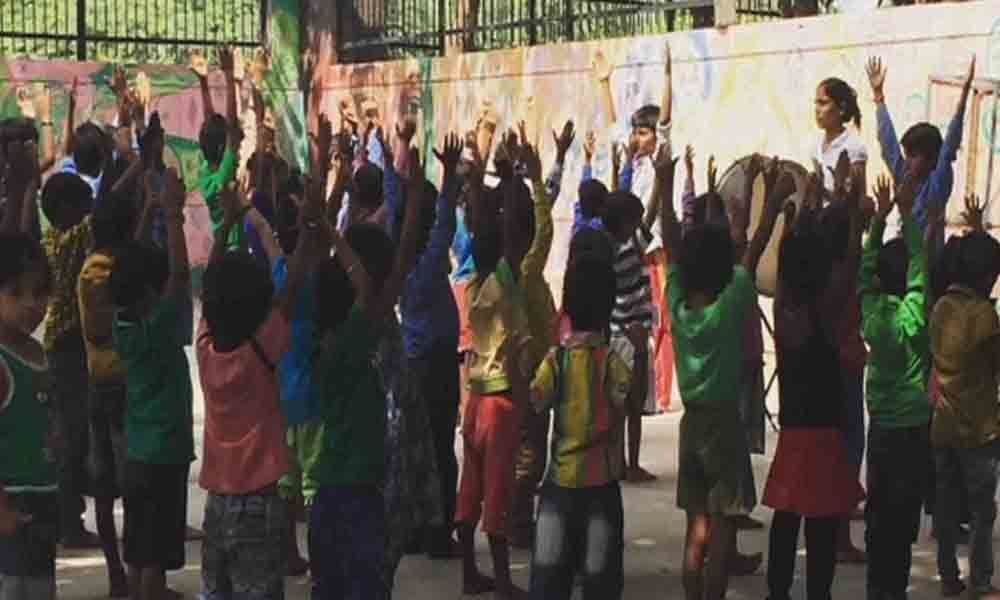Live
- Sunny turns up the heat
- ‘Thandel’ first single ‘Bujji Thalli’ to drop soon
- ‘Thalapathi’ set for grand re-release on Rajinikanth’s 74th birthday
- Shahid Kapoor’s ‘Ashwatthama’ kept on hold due to budget constraints
- ‘Drinker Sai’ teaser: Attracts youth
- Netflix Outage in India and US Ahead of Tyson vs Paul Match
- Police Intensify Investigation into Lagacharla Attack on Officers; Eight More Detained
- Google Docs Introduces AI-Powered Clip Art Generator with Gemini
- LIC sets up stall at India Int’l Trade Fair
- Celebrating journalism and its role in society
Just In

Do we need people who act as living bridges in our conflict-ridden world? Do we need people who can sensitise people towards other cultures and build bridges globally between different cultures? Most of us would say, "Yes we do, and we need them very badly".
Do we need people who act as living bridges in our conflict-ridden world? Do we need people who can sensitise people towards other cultures and build bridges globally between different cultures? Most of us would say, "Yes we do, and we need them very badly".
"Understanding languages and other cultures build bridges. It is the fastest way to bring the world closer together and to Truth. Through understanding, people will be able to see their similarities before the differences", described Suzy Kassem beautifully.
Dr Amit Nagpal, a keynote speaker and bestselling author strongly believe that we need to appreciate our similarities instead of focusing on our differences. He believes in using stories as bridges.
Bridging personal story and organisation story
"Very often our personal brands and organisation brands do not seem to be in sync and express conflicting messages in personal and organisational stories. Your story is your brand; therefore, to align your personal and organisation brands, you need to interweave the common threads between your personal and organisation stories", highlighted Dr Amit Nagpal during his session entitled, "Aligning your personal story with organisation story" at The Roseate, New Delhi for women social entrepreneurs from UAE.
Bridging cultures
Interacting with entrepreneurs, mentors, students and facilitators from across the world has been a fascinating journey for Dr Amit. "The most interesting part of conducting sessions for an international audience is the power and opportunity to build global bridges or bridges between people of different cultures. With so many parts of the world currently going through conflict, it is all the more critical to build cultural bridges between nations", he added.
Introducing India to the world
While he loves to introduce international audiences to interesting facts about Indian culture, he also talks about what India can learn from other cultures. Two aspects of Indian culture which he is especially fond of are Namaste and Deepawali. Namaste means the god in me bows down to the god in you while Deepawali is actually the festival of enlightenment or light in the soul. The lamps of lights are symbols of light in the soul and victory of knowledge over ignorance.
He gave two interesting presentations to students of Lancaster University, UK visiting India as part of the summer exchange program at GD Goenka World Institute viz. "What India can offer to the world?" and "Social Media and Global Social Trends".
He talked about Meditation and Yoga, Ayurveda and so on in the first session and discussed ways of building bridges between Indian and British citizens. In the second session, he talked about global social and cultural shifts such as social media as an empowerment tool for creatives, increased opportunities for collaboration etc.
Dr Amit was the only speaker from India among 75 speakers from across the world at Story the Future Summit (Online) held in September last year. Some of the points he highlighted in his interview with the summit host Mary Alice Arthur included the power of inspiring stories to create a win-win situation for both the storyteller and the audience and storytelling tradition in Indian culture.
At another session organized by SSE India, Dr Amit interacted with a group of facilitators from Argentina on best mentoring practices. He talked about four pillars of the mentor-mentee relationship viz. trust, perspective, observation and tough love.
Building bonds between cultures
BRICS Forum, Russian Centre for Science and Culture and New Delhi Institute of Management co-organised World Internet Day celebrations. He began by sharing his own story and a special bond with Russia (then USSR) in childhood. "They say life is not a fairy tale and you don't live happily thereafter. But reading Russian fairy tales in childhood taught me to hope, possibility and magic", he noted.
In his presentation with the students of City College of New York (visiting NDIM, New Delhi), he discussed how digital tools have also made it easier for people to connect globally through Facebook, LinkedIn, Snap Chat, and Twitter, which is helping build bridges between cultures. "Today we see people connecting and showing support through social media by talking about their experiences through hashtags like- #BlackLivesMatter, #ImWithHer, etc.", he added.

© 2024 Hyderabad Media House Limited/The Hans India. All rights reserved. Powered by hocalwire.com







